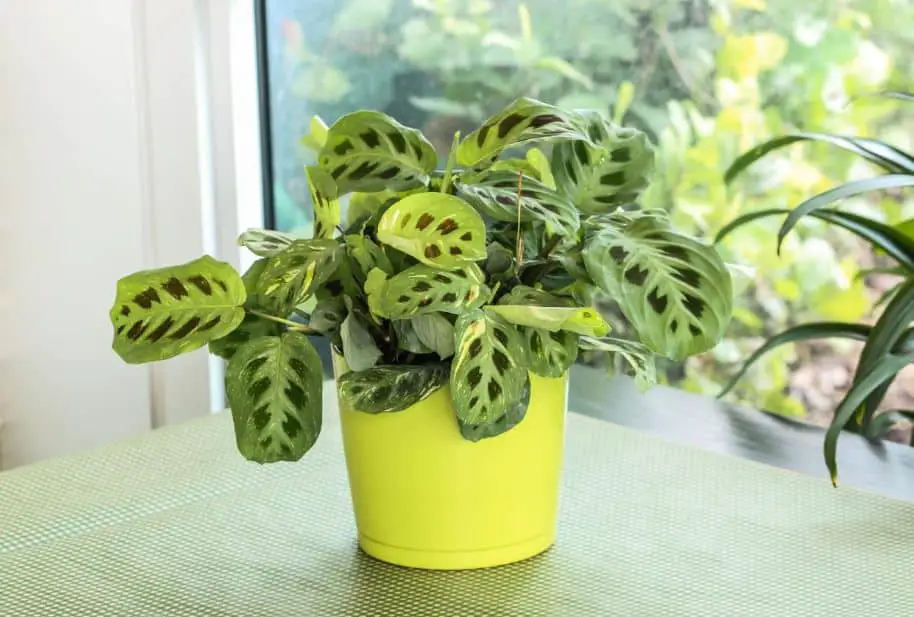The majority of people are aware of how to cultivate prayer-plants. Though it is simple to cultivate, the prayer plant (Maranta leuconeura) requires certain requirements. To find out what those requirements are, keep reading.

How to Grow a Prayer Plant
Although the indoor prayer plant can handle certain low light conditions, it prefers bright, direct sunlight. The prayer plant needs both high humidity and well-drained soil for maximum development. The prayer plant should be maintained in a wet but not-soaked environment. Prayer plant indoor plants should be watered with warm water in the spring through the fall, and every two weeks, they should be fertilized with an all-purpose fertilizer.
Throughout the winter hibernation period, the soil must stay drier. But remember that dry air could also be a problem in the winter. To boost the humidity in the air, combine the prayer plant with other indoor plants and mist it daily with warm water. It also helps to place the plant’s container on top of a nearby water bowl or a shallow dish of pebbles and water. On the other hand, refrain from allowing the prayer plant to immerse itself in water. The ideal temperature range for the prayer plant is between 60 and 80 F (16-27 C).
Prayer Plant Propagation
Repot in the early spring, when prayer plant division may be used for propagation. When repotting the prayer plant, use standard potting soil. From spring through early summer, stem cuttings may also be taken. Take cuttings just below the nodes closest to the stem’s base. Cuttings may be put in a damp peat and perlite solution to maintain moisture levels and covered with plastic. You can puncture a few air holes in the plastic to ensure proper ventilation. The cuttings should be placed in a sunny area.
If a section of the prayer plant has broken off, rooting hormone should be applied to the damaged end before putting it in distilled water. Every other day, the water is changed. Before digging it out and planting it in the soil, wait until the roots are approximately an inch long. When propagating prayer plants, remember that the piece must have at least a tiny stem on the leaves to take root. The piece may also be rooted straight in the ground as cuttings.
Prayer Plant Pest Issues
It is a good idea to properly check fresh plants before bringing them inside since prayer plant houseplants may be vulnerable to pests such as mealybugs, aphids, and spider mites. As an extra measure, please inspect prayer plant houseplants during watering or feeding intervals for any potential issues.
Growing a prayer plant is simple, and the benefits far outweigh any difficulties.

